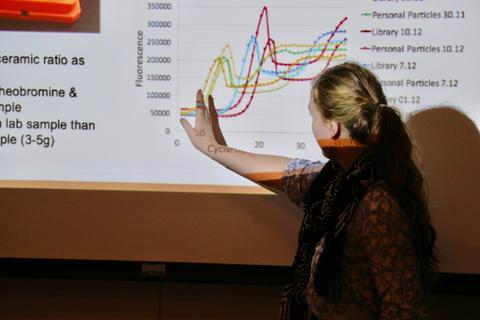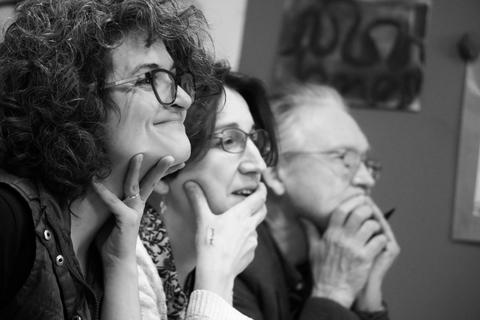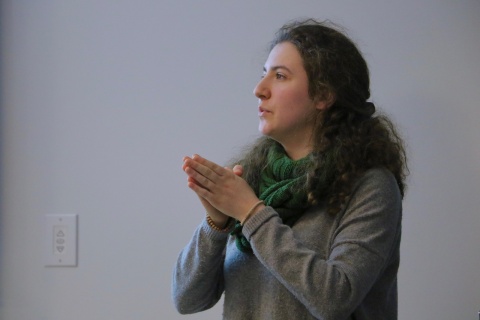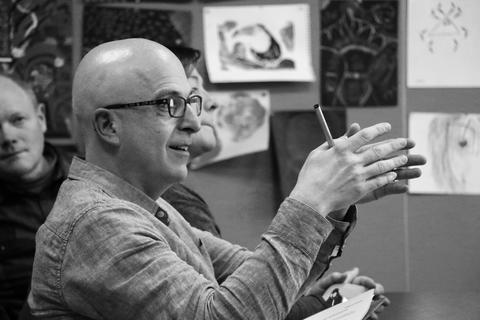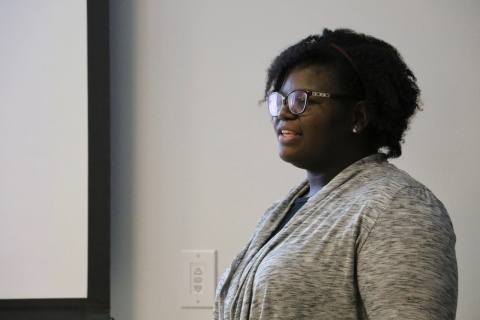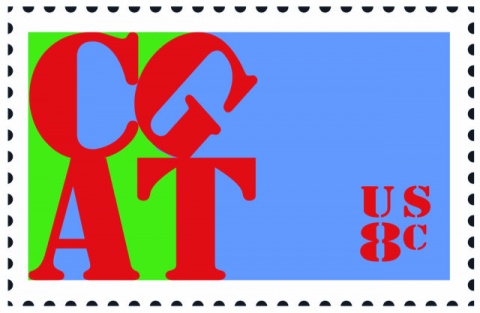By Jon Atherton
Rarely occurring side by side in an academic setting, cultural heritage and molecular biophysics are the focus of a groundbreaking course at Yale thanks to fearless students, a newly dedicated lab and expert conservation science taking place at the University’s West Campus.
Led by Andrew Miranker, Professor of Molecular Biophysics & Biochemistry, “Pipettes and Pigments” leverages this unexpected connection to offer unique learning opportunities with the potential to create novel tools.
Miranker, who conceived the course in partnership with Ian McClure, Chief Conservator at Yale Art Gallery, puts it this way: “A dot-sized sample of an artist’s work may be a structured mix of scores of chemicals that over time have morphed into thousands. If conservation chemists were biologists, they would have called their work material-omics.”
The challenge, explains Miranker, was to unify the disciplines in the same place. “The biological sciences are poorly represented in art conservation. Here we have an opportunity for hands-on coursework in a unique location where our fields can be together.”
The newly established Teaching Lab is sandwiched between the Institute for the Preservation of Cultural Heritage (IPCH) and the Energy Sciences Institute. Renovated from unused space at West Campus, the dedicated lab will host Yale undergraduate coursework and classes, academic workshops, and collaborative teaching opportunities across many scientific disciplines.
The vanguard Yale class – formally called Art and Biomolecular Recognition – teaches students how biomolecules display extraordinary selectivity in their function. Students then learn hands-on techniques in DNA engineering to solve problems they themselves identify within their interests in archeology, natural history, anthropology or art.
A passion for the Dutch Golden Age led class member Agata Sorotokin (Yale ‘19) to a summer visit to the Mauritshuis at the Hague, and a fascination with Rembrandt’s 1663 painting Homer. Back at the lab, Sorotokin sought to develop DNA-based tools to investigate the source of the rich and varied textural affects unique to Rembrandt’s work – attributes that have perplexed scholars for centuries.
Some painters of the era pre-heated their oil paints, effectively producing partially cross-linked polymers within the linseed oil binders in paint. Pinpointing DNA aptamers to recognize the residual presence of such ‘heat bodying’ could help decipher how Rembrandt created the paint forms and peaks characteristic to his practice.
“Two things have overlapped here that feels unique at Yale”, explains Sorotokin. “Getting the chance to be involved creatively in this fascinating period in art history is just a wonderful thing.”
Other class members pursue challenges as broad as using DNA to selectively remove unwanted bleeding of cochineal-based dyes in Native American blankets; a field test that co-opts an off-the-shelf blood glucose test to measure the presence of cocoa residue on Central American vessels; and a DNA-enzyme based method to remove fungal deposits from the surface of a fifteenth century wedding chest.
Assistance and tools come from many local resources including art conservator Sydney Beall and Professor of Human Genetics, Kaya Bilguvar. At the adjacent Yale Center for Genome Analysis, Bilguvar enables the students to learn how to fast-track their work using ‘deep-sequencing.’
“No-one has ever done what these students are trying to do”, explains Cynthia Schwarz, course instructor and Associate Conservator of Paintings at Yale University Art Gallery.
Conserving paintings at the adjacent Conservation Laboratory, one of several labs at IPCH, Schwarz works shoulder to shoulder with conservators and scientists from across Yale’s collections. Through a connecting corridor, the Wurtele Study Center will soon open up nearly 37,000 three-dimensional art objects — ceramic dishes, stone statuary, silver candlesticks, glass goblets, etc. —for more classes and research.
“We’re teaching scientific processes, creating a greater awareness of the technological advances in the biological sciences. But then students can go next door to actively observe art and ask questions of real materials,” said Schwarz. “We have all the pieces here to teach future conservators a different way of thinking – outside of our own disciplines.”
Improved access to new bio-technology tools could be a tangible benefit beyond the lab bench, says Anikó Bezur, Director of IPCH’s Technical Studies Lab and co-instructor for the new course. “Today’s equipment is often expensive and requires specialized training. The students are helping us think about how we can deploy DNA testing so a collections manager can detect new materials, or where an archeologist in the field wants to screen freshly excavated artifacts.”
Miranker underscores the simple driving force behind the new enterprise: unifying different disciplines, scholars, and lab technology all in the same place.
“As an education community we need to make sure we’re exposing our students to all these possibilities early enough,” he notes. “West Campus is helping make that happen.”
